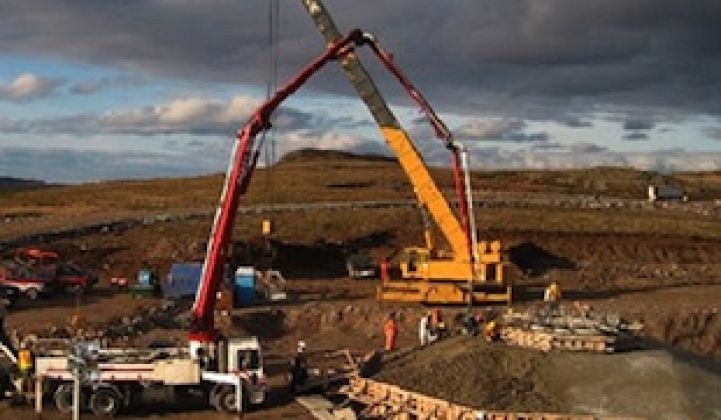Some good news from the IRS on April 15.
A newly issued definition from the IRS has removed the last element of uncertainty attached to the extension of the production tax credit (PTC). The PTC is crucial to the wind and geothermal industries.
The IRS definition of "under construction" was necessary because an extension of the credit passed on January 1, 2013 replaced language in the previous tax credit provision that required projects to be in production by the deadline to earn the credit. The new language allows the tax credit to apply to projects that are under construction by its expiration.
The new language was intended to compensate for the fact that lawmakers did not provide ongoing support to developers earlier in 2012. The uncertainty produced by that led to an abnormal shift in the wind business. Developers put their full effort into getting projects into production in time to qualify for the credit and virtually ignored planning and investment for 2013.
The result was record-breaking installations in 4Q 2012 and virtually no orders for 1H 2013.
Most wind industry forecasters expect orders to pick up now that the final element of uncertainty has been eliminated, but because large wind equipment manufacturing requires a long lead time, forecasters do not expect development to pick up until 2H 2013. The new under-construction provision should, however, drive development activity well into 2014.
According to IRS Notice 2013-29, released on April 15, wind, geothermal, biomass, landfill gas, incremental hydroelectric and ocean energy projects that meet one of two under-construction standards by December 31 of this year will qualify to either get: 1) a tax credit of $0.023 for every kilowatt-hour produced for the first ten years of the project’s life, or 2) an investment tax credit equal to 30 percent of the project’s cost when construction is completed.
To meet the "under construction" qualification, developers must either: 1) show “physical work of a significant nature” has begun on their project, either a) at the site, or b) in a factory to which the developer has given a binding order for specially designed equipment, or 2) show that at least 5 percent of the total project cost has been incurred.
There is no completion deadline for projects that meet the "under construction" standards by December 31.
As expected, this definition of "under construction" is similar to that used for the 2009 Recovery Act’s Treasury cash grant program. However, according to Chadbourne & Parke LLP attorneys Keith Martin and John Marciano, there is one significant difference.
Developers chose the 5 percent test under the Treasury Grant program because, unlike the physical work test, they did not have to show continuous construction. “This let tax equity investors and lenders determine with more certainty at the outset whether a project was under construction in time,” they explained.
The IRS will, Martin and Marciano wrote, now apply the “continuous efforts” standard to both the physical work and the 5 percent options.
A welcome new provision in the IRS Notice is that the entire wind development will be treated as a single project. Past practice has been to apply the "in production" standard to each individual turbine.
Geothermal developers and developers of very large wind projects had wanted a special ruling allowing their spending and/or efforts at permitting, interconnection contracts, and financing and off-take contracts to apply. Such a provision was not included.
The PTC was already in place for geothermal developers until the end of 2013. They now have until December 31 to get past the costly and time-consuming exploration and pre-development required for a project and to meet the physical work or 5 percent tests.



